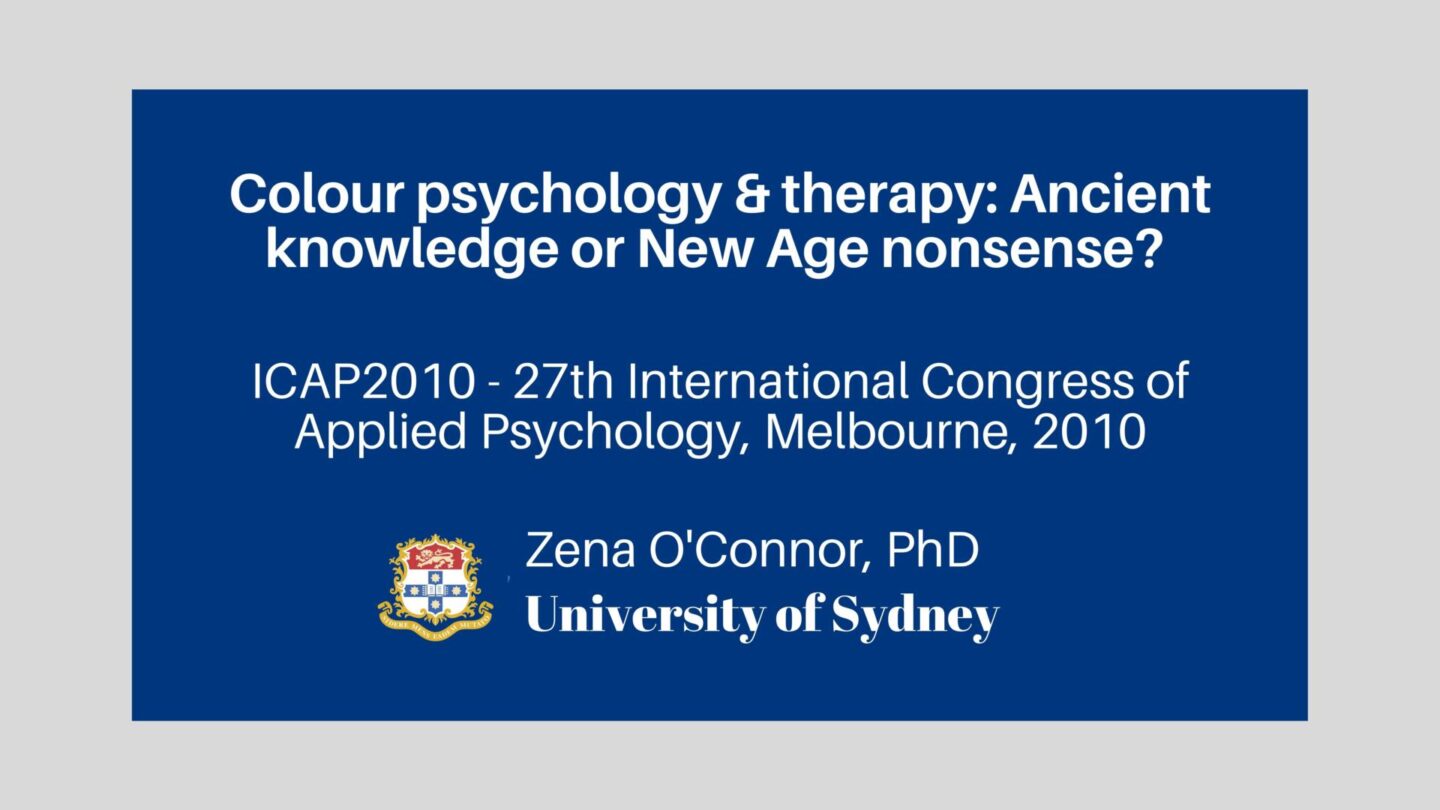
I presented this peer-reviewed paper at ICAP2010: The 27th International Congress of Applied Psychology, Melbourne, held 11-16 July 2010. The International Association of Applied Psychology (IAAP) is the sponsor of the International Congress of Applied Psychology.
This paper was based on evidence-based information and aimed to identify fact from fiction, and I discussed the diverse origins of theories about colour psychology and colour therapy. While many ‘pop psychology’ claims suggest otherwise, there is no evidence to support an irrefutable and universal causal link between colour and a range of human responses.
Depending on context, colour has the capacity to communicate often more effectively than words. In addition, colour has the capacity to attract attention, encourage engagement and modify human behaviour.
There are a number of reasons to exercise caveat emptor in regard to claims about colour psychology:
- A wide range of factors influence the interface between colour and human response. These factors include individual and cultural differences; contextual, perceptual and temporal factors (O’Connor, 2011; O’Connor, 2010; O’Connor, 2008).
- A report commissioned by NASA found that there are no “hard-wired linkages” between colour & human response (Wise, Wise & Beach, 1988).
- Ancient wisdom & traditional beliefs ≠ evidential proof.
- Articles about colour psychology and colour therapy in popular media often present factoids and unsubstantiated claims as fact.
- Early colour psychology and colour therapy studies often lacked adequate research rigour, reliability and validity.
- Inherent bias about colour psychology and colour therapy is evident among many writers as well as researchers.
- Many colour psychology and colour therapy studies suffer from the fallacy of the single cause and do no allow for other causal factors.
- The interface between colour & human response highly complex (Hard & Sivik, 2001).
- Key mediating variables include: personality, affective state and screening ability (Dijkstra, Pieterse, & Pruyn, 2008; Kwallek, Woodson, Lewis, & Sales, 1997; Mehrabian, 1977).
For more information about the conference, go to their website. Please email for a copy of the paper.